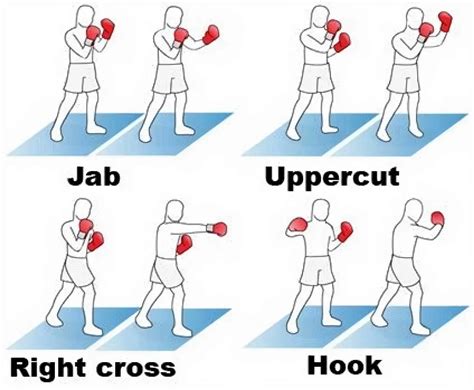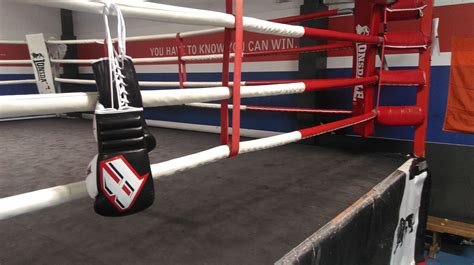Explore common boxing injuries, prevention strategies, recovery techniques, and the role of nutrition for faster healing in this comprehensive guide.Boxing is an exhilarating sport that demands strength, agility, and endurance; however, the physical toll it takes on athletes can lead to a variety of injuries. From sprains to fractures, understanding and addressing these common boxing injuries is crucial for any fighter, whether you’re a seasoned professional or just starting out. In this article, we will delve into effective prevention strategies that can guard against injuries, emphasize the importance of proper warm-ups, and provide essential recovery techniques to facilitate a quicker return to the ring. Additionally, we will explore how nutrition plays a pivotal role in the healing process. Arm yourself with the knowledge to stay safe and healthy while pursuing your passion for boxing, and discover answers to frequently asked questions to further enhance your understanding.
Understanding Common Types Of Boxing Injuries
Boxing is an intense and physically demanding sport, often leading to a variety of injuries, some of which can be serious. Understanding these common types of Boxing Injuries is essential for both athletes and trainers to implement effective prevention and recovery strategies.
| Type of Injury | Description | Common Causes |
|---|---|---|
| Concussions | A brain injury caused by repeated blows to the head, affecting cognitive function. | Direct strikes to the head, lack of protective headgear. |
| Fractures | Breaks in bones, particularly in the hands, wrists, and face. | Poor punching technique, impact from punches. |
| Sprains and Strains | Tears in ligaments (sprains) or muscles (strains), often in the ankle or shoulder. | Incorrect footwork, overextension during punches. |
| Shoulder Injuries | Injuries ranging from tendonitis to dislocations in the shoulder joint. | Repetitive overhead movements without sufficient strength training. |
| Hand Injuries | Commonly involve broken bones or ligament tears in the hand and wrist. | Poor wrapping technique, striking hard surfaces without proper protection. |
Recognizing the symptoms and risk factors associated with these injuries can help boxers make informed decisions regarding training regimens and recovery processes. Implementing safety measures and consulting with healthcare professionals are integral to mitigating the risks of Boxing Injuries.
Effective Prevention Strategies For Boxing Injuries
To effectively prevent Boxing Injuries: it is crucial to adopt a comprehensive approach that encompasses various strategies. Here are some effective prevention strategies to consider:
| Prevention Strategy | Description |
|---|---|
| Proper Technique | Developing and practicing proper boxing techniques can significantly reduce the risk of injuries. Focus on maintaining correct posture and alignment to avoid strain. |
| Regular Conditioning | Incorporating strength and conditioning training helps improve muscle balance and endurance, making the body more resilient to the demands of boxing. |
| Appropriate Gear | Using well-fitted gloves, headgear, and protective gear is essential for minimizing the risk of injuries during both practice and competition. |
| Rest And Recovery | Ensuring adequate rest between training sessions allows the body time to recover, reducing the likelihood of overuse injuries. |
| Cross-Training | Engaging in various forms of physical activity, such as swimming or yoga, can enhance flexibility, strength, and overall fitness, benefiting boxing performance. |
Implementing these strategies can create a robust framework for minimizing the risk of Boxing Injuries: and ensuring a safer boxing experience. As an athlete, it is essential to remain vigilant and proactive in injury prevention to maintain longevity in the sport.
Importance Of Proper Warm-Up In Preventing Injuries
Warming up before engaging in boxing is crucial for preventing Boxing Injuries: and ensuring optimal performance. A proper warm-up helps prepare both the muscles and the cardiovascular system for the intense physical demands that boxing places on the body. Here are the key reasons why incorporating a thorough warm-up routine is essential:
- Increased Blood Flow: Warming up gradually increases heart rate and circulation, enhancing the delivery of oxygen and nutrients to the muscles. This reduces the risk of strains and sprains.
- Enhanced Flexibility: A good warm-up includes dynamic stretches that improve range of motion in the joints and muscles, making it less likely for athletes to sustain injuries.
- Neuromuscular Activation: Warming up activates the nervous system, improving coordination and reaction times, which are critical in boxing where agility is key.
- Mental Preparedness: The warm-up phase allows boxers to mentally prepare for their training or match, helping them focus and build confidence, which can diminish the risk of panic-related injuries.
Neglecting proper warm-up routines can lead to a higher likelihood of Boxing Injuries:. Prioritize this essential step to not only enhance your performance but also safeguard your body against potential setbacks in your boxing journey.
Recovery Techniques To Heal Boxing Injuries Faster
Recovering from Boxing Injuries: is crucial for any athlete aiming to return to the ring efficiently and safely. Implementing effective recovery techniques not only speeds up healing but also helps in preventing further injuries. Here are some essential techniques to consider:
Incorporating these recovery techniques can be pivotal in overcoming Boxing Injuries: effectively, ensuring that boxers can return to form stronger and healthier. Listening to your body and seeking guidance from medical professionals remain essential components of any recovery plan.
How Nutrition Plays A Role In Injury Recovery
Nutrition is a critical component in the recovery process from boxing injuries. The right dietary choices can significantly influence the healing time and overall health of athletes. Here are some key aspects of how nutrition aids in recovery:
- Protein Intake: Protein plays a vital role in tissue repair and regeneration. Foods rich in protein such as lean meats, fish, eggs, and legumes should be prioritized to support the healing process.
- Anti-inflammatory Foods: Consuming foods that reduce inflammation can help alleviate pain and swelling associated with boxing injuries. Incorporate fruits like berries and oranges, vegetables like spinach and kale, and fatty fish rich in omega-3s.
- Hydration: Staying well-hydrated is essential for recovery. Water, herbal teas, and broths help maintain fluid balance, which is crucial for transporting nutrients and repairing tissues.
- Micronutrients: Vitamins and minerals, specifically vitamin C, vitamin D, and zinc, are important for immune function and tissue healing. Ensure an adequate intake of fruits, vegetables, nuts, and seeds.
- Balanced Diet: A well-rounded diet that covers all food groups can provide the necessary nutrients for optimal recovery. Maintaining energy levels will also help you stay active, facilitating a quicker return to training.
Paying attention to your nutrition during recovery from boxing injuries can make a substantial difference in how quickly and effectively you heal. Prioritize a balanced, nutrient-rich diet to enhance the recovery process and return to the ring stronger than before.
Frequently Asked Questions
What are the most common injuries in boxing?
The most common injuries in boxing include cuts, bruises, fractures, and joint injuries, particularly to the hands and wrists.
How can boxers prevent injuries during training?
Boxers can prevent injuries by using proper equipment, maintaining good warm-up and cool-down routines, practicing correct techniques, and ensuring they are in good physical condition.
What role does conditioning play in injury prevention for boxers?
Conditioning helps improve a boxer’s strength, flexibility, and stamina, reducing the risk of injuries by preparing their body to handle the physical demands of the sport.
What should a boxer do after sustaining an injury?
After sustaining an injury, a boxer should seek medical attention, follow a proper rehabilitation program, and gradually return to training to prevent re-injuring the affected area.
Are there specific recovery techniques for boxing injuries?
Yes, recovery techniques for boxing injuries may include rest, ice therapy, physical therapy, and gradual reintroduction to boxing-related activities under professional guidance.
How important is proper technique in boxing for injury prevention?
Proper technique is crucial in boxing as it not only enhances performance but also minimizes the risk of injuries by ensuring that movements are efficient and safe.
What should be included in a boxer’s warm-up routine to prevent injuries?
A warm-up routine for boxers should include dynamic stretching, light cardio, and sport-specific drills to prepare the muscles and joints for the rigors of training or competition.









